Siaaa - Lecture notes 2 PDF

| Title | Siaaa - Lecture notes 2 |
|---|---|
| Author | Abizar Alghifari |
| Course | Geomorfologi Laut |
| Institution | Universitas Diponegoro |
| Pages | 26 |
| File Size | 549.1 KB |
| File Type | |
| Total Downloads | 26 |
| Total Views | 63 |
Summary
271CHAPTER 12FRAUD SCHEMES AND FRAUD DETECTIONREVIEW QUESTIONS1. What is financial statement fraud?Response: Fraudulent statements are associated with management fraud discussed in Chapter 11. While all fraud involves some form of financial misstatement, to meet the definition under this class of fr...
Description
CHAPTER 12 FRAUD SCHEMES AND FRAUD DETECTION REVIEW QUESTIONS 1.
What is financial statement fraud? Response: Fraudulent statements are associated with management fraud discussed in Chapter 11. While all fraud involves some form of financial misstatement, to meet the definition under this class of fraud scheme, the statement itself must bring direct or indirect financial benefit to the perpetrator. In other words, the statement is not simply a vehicle for obscuring or covering a fraudulent act. For example, misstating the cash account balance to cover the theft of cash does not fall under this class of fraud scheme. On the other hand, understating liabilities to present a more favorable financial picture of the organization to drive up stock prices does qualify.
2.
Why is financial statement fraud particularly appalling? Response: These numbers represent significant human suffering. How does one measure the impact on stockholders as they watch their life savings and retirement funds evaporate after news of the fraud breaks?
3.
What is corruption? Response: Corruption is perhaps the oldest of the white-collar crimes. It includes bribery, conflicts of interest, illegal gratuities, and economic extortion. It is an act of an official or fiduciary person who unlawfully and wrongfully uses his station or character to procure some benefit for himself or for another person, contrary to duty and the rights of others.
4.
Define bribery. Response: Bribery involves giving, offering, soliciting, or receiving things of value to influence an official in the performance of his or her lawful duties. Officials may be employed by government (or regulatory) agencies or by private organizations.
5.
What is illegal gratuity fraud? Response: An illegal gratuity involves giving, receiving, offering, or soliciting something of value because of an official act that has been taken. This is similar to a bribe, but the transaction occurs after the fact.
6.
Explain conflict of interest. Response: A conflict of interest occurs when an employee acts on behalf of a third party during the discharge of his or her duties or has self-interest in the activity being performed. When the employee’s conflict of interest is unknown to the employer and results in financial loss, then fraud has occurred.
7.
What is economic extortion? Response: Economic extortion is the use (or threat) of force (including economic sanctions) by an individual or organization to obtain something of value. The item of value could be a
271
272
Chapter 12
financial or economic asset, information, or cooperation to obtain a favorable decision on some matter under review. 8.
Explain charges to expense account fraud. Response: The theft of an asset creates an imbalance in the basic accounting equation (assets = equities), which the criminal must adjust if the theft is to go undetected. The most common way to conceal the imbalance is to charge the asset to an expense account and reduce equity by the same amount. For example, the theft of $20,000 cash could be charged to a miscellaneous operating expense account.
9.
What is lapping? Response: Lapping involves the receipt of customer payments in the form of checks. Many employees view this as borrowing, because they plan to repay it some day. Lapping of accounts receivable works as follows: Period 1: Period 2: Period 3:
Cashier receives $1,000 from ABC Company and keeps it. Cashier receives $1,000 from XYZ Company and credits ABC Company’s accounts receivable account. Cashier receives $1,000 from JKL Company and credits XYZ Company’s accounts receivable account.
At any given time, accounts receivable is overstated by $1,000, as well as cash. The employee keeps lapping the accounts, so a customer will not receive a delinquent bill notice. 10.
What is collusion? Response: Collusion is cooperation by two or more individuals to commit a fraud. For example, the purchasing agent prepares a purchase order for items from the fake vendor and the receiving clerk prepares a fictitious receiving report for the items. Accounts payable receives these documents, which appear to be legitimate, and matches them to the phony invoice when it arrives. An accounts payable is recorded, and payment is subsequently made.
11.
What is transaction fraud? Response: Transaction fraud involves deleting, altering, or adding false transactions to divert assets to the perpetrator.
12.
What is masquerading? Response: Masquerading involves a perpetrator gaining access to the system from a remote site by pretending to be an authorized user. This usually requires first gaining authorized access to a password. Hacking may involve piggybacking or masquerading techniques.
13.
What is piggybacking? Response: Piggybacking is a technique in which the perpetrator at a remote site taps into the telecommunications lines and latches onto an authorized user who is logging into the system. Once in the system, the perpetrator can masquerade as the authorized user.
14.
What is a hacker? Response: Hackers are distinguished from other computer criminals because their motives are usually not to defraud for financial gain. They are often motivated primarily by the
Fraud Schemes and Fraud Detection
273
challenge of breaking into the system rather than the theft of assets. Some hackers are, however, motivated by theft of assets. 15.
Define program fraud. Response: Program fraud includes the following techniques: (a) creating illegal programs that can access data files to alter, delete, or insert values into accounting records; (b) destroying or corrupting a program’s logic using a computer virus; or (c) altering program logic to cause the application to process data incorrectly.
16.
Describe the key elements of database management fraud. Response: Database management fraud includes altering, deleting, corrupting, destroying, or stealing an organization’s data. Because access to database files is an essential element of this fraud, it is usually associated with transaction or program fraud. The most common technique is to access the database from a remote site and browse the files for useful information that can be copied and sold to competitors. Disgruntled employees have been known to destroy company data files simply to harm the organization.
17.
What are the five characteristics of information? Response: Regardless of physical form, useful information has the following characteristics: relevance, timeliness, accuracy, completeness, and summarization.
18.
What is scavenging? Response: Scavenging involves searching through the trash cans of the computer center for discarded output. A perpetrator can often obtain useful information from the carbon sheets removed from multipart reports or from paper reports that were rejected during processing.
19.
What is eavesdropping? Response: Eavesdropping involves listening to output transmissions over telecommunications lines. Technologies are readily available that enable perpetrators to intercept messages being sent over unprotected telephone lines and microwave channels.
20.
What document contains the current authoritative guideline on fraud detection? Response: The current authoritative guidelines on fraud detection are presented in SAS No. 99, Consideration of Fraud in a Financial Statement Audit.
DISCUSSION QUESTIONS 1.
Most accounting firms allow their employees to marry within the accounting firm; however, they do not allow an employee to remain working for them if he or she marries an employee of one of their auditing clients. Why do you think this policy exists? Response: The accounting firm must retain its independence from its clients. The auditor must not have the opportunity to collude, in any fashion, with any employees of its client. Having one spouse working for the client and the other working for the accounting firm would compromise the independence of the accounting firm.
274
2.
Chapter 12
Discuss whether a firm with fewer employees than there are incompatible tasks should rely more heavily on general authority than specific authority. Response: Small firms with fewer employees than there are incompatible tasks should rely more heavily on specific authorizations. More approvals of decision by management and increased supervision should be imposed in order to compensate some for the lack of separation of duties.
3.
An organization’s internal audit department is usually considered to be an effective control mechanism for evaluating the organization’s internal control structure. The Birch Company’s internal auditing function reports directly to the controller. Comment on the effectiveness of this organizational structure. Response: Having the internal auditing function report to the controller is unacceptable. If the controller is aware of/or involved in a fraud or defalcation, then he or she may give false or inaccurate information to the auditors. The possibility that the auditors may lose their jobs if they do not keep certain matters quiet also exists. Further, the fraud may be occurring at a level higher than the controller, and the controller may fear losing his or her job if the matter is pursued. The best route is to have the internal auditing function report directly to the board of directors.
4.
The proper segregation of functions is an effective internal control procedure. Comment on the exposure (if any) caused by combining the tasks of paycheck preparation and distribution to employees. Response: If a payroll employee were to prepare a paycheck for a nonexistent employee (perhaps under an alias or in the name of a relative) and this employee also has the task of distributing the checks, then no one would be the wiser. On the other hand, if the checks go directly to another person, who then distributes the paychecks, the extra check should be discovered.
5.
Give two examples of employee fraud and explain how the thefts might occur. Response: Employee fraud or frauds by nonmanagement employees are generally designed to directly convert cash or other assets to the employee’s personal benefit. Employee fraud usually involves three steps: (a) stealing something of value (an asset), (b) converting the asset to a usable form (cash), and (c) concealing the crime to avoid detection. Examples are: • Charges To Expense Accounts: The theft of $50,000 cash could be charged to a miscellaneous operating expense account. The loss of the cash reduces the firm’s assets by $50,000. To offset this, equity is reduced by $50,000 when the miscellaneous expense account is closed to retained earnings, thus keeping the accounting equation in balance. • Lapping: The employee first steals and cashes a check for $5,000 sent by Customer A. To conceal the accounting imbalance caused by the loss of the asset, Customer A’s account is not credited. Later (the next billing period), the employee uses a $5,000 check received from Customer B and applies this to Customer A’s account. Funds received in the next period from Customer C are then applied to the account of Customer B, and so on.
6.
Discuss the fraud schemes of bribery, illegal gratuities, and economic extortion. Explain how they are similar and how they differ.
Fraud Schemes and Fraud Detection
275
Response: Bribery involves giving, offering, soliciting, or receiving things of value to influence an official in the performance of his or her lawful duties. Officials may be employed by government (or regulatory) agencies or by private organizations. Bribery defrauds the entity (business organization or government agency) of the right to honest and loyal services from those employed by it. An illegal gratuity is similar to a bribe but occurs after the fact. It involves giving, receiving, offering, or soliciting something of value because of an official act that has already been taken. Economic extortion is the use (or threat) of force (including economic sanctions) by an individual or organization to obtain something of value. The item of value could be a financial or economic asset, information, or cooperation to obtain a favorable decision on some matter under review. 7.
Explain at least three forms of computer fraud. Response: Computer fraud can occur at various points during computer processing. The following summarizes the key areas of risk: • Data collection fraud involves the data entry stage of the process. Frauds of this type require little or no computer skills. The perpetrator need only understand how the system works to enter data that it will process. The fraudulent act involves falsifying data as they enter the system. This can be to delete, alter, or add a transaction. For example, to commit a payroll fraud, the perpetrator may insert a fraudulent payroll transaction along with other legitimate transactions. • Program fraud includes the following techniques: (a) creating illegal programs that can access data files to alter, delete, or insert values into accounting records; (b) destroying or corrupting a program’s logic using a computer virus; or (c) altering program logic to cause the application to process data incorrectly. Altering the logic to the rounding program used by banks to calculate interest on its customers’ accounts is an example of program fraud. • Operations fraud is the misuse or theft of the firm’s computer resources. This often involves using the computer to conduct personal business. For example, a programmer may use the firm’s computer time to write software that he or she sells commercially. • Database management fraud includes altering, deleting, corrupting, destroying, or stealing an organization’s data. The most common technique is to access the database from a remote site and browse the files for useful information that can be copied and sold to competitors. Disgruntled employees have been known to destroy company data files simply to harm the organization. Viruses and logic bombs designed to destroy databases are also forms of database fraud. • Information generation fraud is stealing, misdirecting, or misusing computer output. One technique, called scavenging, involves searching through the trash cans of the computer center for discarded output. A perpetrator can often obtain useful information from the carbon sheets removed from multipart reports or from paper reports that were rejected during processing. • Eavesdropping involves listening to output transmissions over telecommunications lines. Available technologies enable perpetrators to intercept messages being sent over unprotected telephone lines and microwave channels. Most experts agree that it is practically impossible to prevent a determined perpetrator from accessing data communication channels. Data encryption can, however, render useless any data captured through eavesdropping.
8.
A profile of fraud perpetrators prepared by the Association of Certified Fraud Examiners revealed that adult males with advanced degrees commit a disproportionate amount of fraud. Explain these findings.
276
Chapter 12
Response: The study suggests that notwithstanding the importance of personal ethics, situational pressures and opportunity contribute greatly to fraud. a. Situational Pressures: As people age, they tend to marry, assume greater responsibilities, and be influenced by significant situational pressures. Heads of households tend to feel situational pressures more severely than other family members. Because heads of households (in the economic sense) are more often men than women, some of the variance due to gender is explained. b. Opportunity: The real culprit responsible for explaining the loss variance presented in the study is opportunity. Opportunity can be redefined as control over assets or access to assets. Indeed, control and access are essential elements of opportunity. The financial loss differences associated with most of the classifications above are explained by the opportunity factor. • Gender: Although the demographic picture is changing, more men than women occupy positions of authority in business organizations, which provide them greater access to assets. • Position: Those in the highest positions have the greatest access to company funds and assets. • Age: Older employees tend to occupy higher ranking positions and therefore generally have greater access to company assets. • Education: Generally, those with more education occupy higher positions in their organizations and therefore have greater access to company funds and other assets. 9.
Explain why collusion between employees and management in the commission of a fraud is difficult to both prevent and detect. Response: Collusion among employees in the commission of a fraud is difficult to both prevent and detect, particularly when the collusion is between managers and their subordinate employees. Management plays a key role in the internal control structure of an organization. It is relied upon to prevent and detect fraud among subordinates. When managers participate in fraud with the employees over whom they are supposed to provide oversight, the organization’s control structure is weakened or completely circumvented, and the company becomes more vulnerable to losses.
10.
Since all fraud involves some form of financial misstatement, how is fraudulent statement fraud different? Response: Fraudulent statements are associated with management fraud. While all fraud involves some form of financial misstatement, to meet the definition under this class of fraud, the statement itself must bring direct or indirect financial benefit to the perpetrator. In other words, the statement is not simply a vehicle for obscuring or covering a fraudulent act. For example, misstating the cash account balance to cover the theft of cash does not fall under this class of fraud. On the other hand, understating liabilities to present a more favorable financial picture of the organization to drive up stock prices does qualify.
11.
Explain how the balance forward and the open invoice methods of maintaining accounts receivable differ. Response: The balance forward method is used extensively for consumer accounts. Total sales to customers for the period are itemized and billed at the period end. Customers are required to pay only a minimum amount of the balance. The rest of the balance, plus interest, is carried forward to the next period.
Fraud Schemes and Fraud Detection
277
The open invoice method is often used to manage trade accounts receivable (sales to other business organizations). Each invoice is recorded as a separate item in the invoice file. Checks received from customers are usually in payment of individual invoices. Because good credit relations between customer and supplier are critical, payments tend to be on time and in full. Partial payments resulting in balances carried forward are the exception rather than the norm.
MULTIPLE CHOICE 1. 2. 3. 4. 5. 6. 7 8 9.
b a c d c c c a b
PROBLEMS 1.
Fraud Scheme A purchasing agent for a home improvement center is also part owner in a wholesale lumber company. The agent has sole discretion in selecting vendors for the lumber sold through the center. The agent directs a disproportionate number of purchase orders to his company, which charges above-market prices for its products. The agent’s financial interest in the supplier is unknown to his employer. Required: What type of fraud is this, and what controls can be implemented to prevent or detect the fraud? Respo...
Similar Free PDFs

Siaaa - Lecture notes 2
- 26 Pages

Lecture notes, lecture 2
- 3 Pages

2 - Lecture notes 2
- 5 Pages

Lecture notes, lecture Chapter 2
- 11 Pages
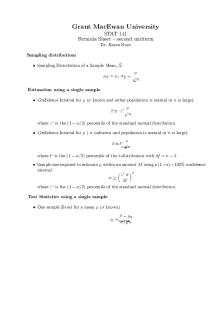
Lecture notes, lecture formula 2
- 1 Pages

2 Biodiversity - Lecture notes 2
- 33 Pages

Chapter 2 - Lecture notes 2
- 30 Pages
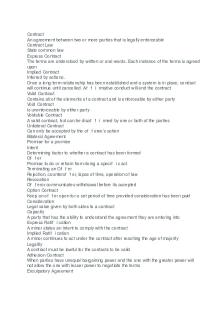
Blaw 2 - Lecture notes 2
- 4 Pages

Chapter 2 - Lecture notes 2
- 4 Pages
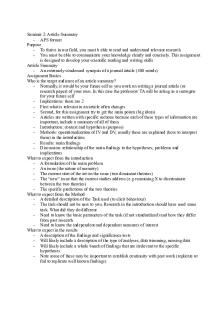
Seminar 2 - Lecture notes 2
- 2 Pages
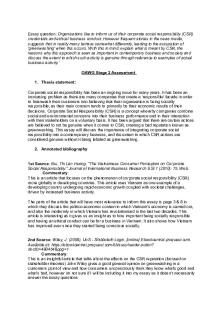
Stage 2 - Lecture notes 2
- 3 Pages
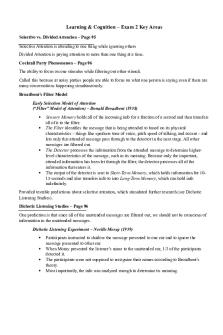
Exam 2 - Lecture notes 2
- 5 Pages
Popular Institutions
- Tinajero National High School - Annex
- Politeknik Caltex Riau
- Yokohama City University
- SGT University
- University of Al-Qadisiyah
- Divine Word College of Vigan
- Techniek College Rotterdam
- Universidade de Santiago
- Universiti Teknologi MARA Cawangan Johor Kampus Pasir Gudang
- Poltekkes Kemenkes Yogyakarta
- Baguio City National High School
- Colegio san marcos
- preparatoria uno
- Centro de Bachillerato Tecnológico Industrial y de Servicios No. 107
- Dalian Maritime University
- Quang Trung Secondary School
- Colegio Tecnológico en Informática
- Corporación Regional de Educación Superior
- Grupo CEDVA
- Dar Al Uloom University
- Centro de Estudios Preuniversitarios de la Universidad Nacional de Ingeniería
- 上智大学
- Aakash International School, Nuna Majara
- San Felipe Neri Catholic School
- Kang Chiao International School - New Taipei City
- Misamis Occidental National High School
- Institución Educativa Escuela Normal Juan Ladrilleros
- Kolehiyo ng Pantukan
- Batanes State College
- Instituto Continental
- Sekolah Menengah Kejuruan Kesehatan Kaltara (Tarakan)
- Colegio de La Inmaculada Concepcion - Cebu



